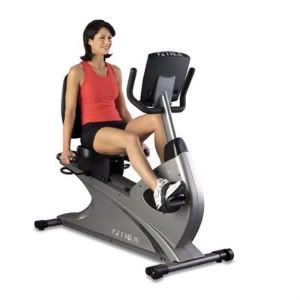Exercise and Arthritis
 |
Walking is always the best exercise. Come on let's walking with Kate Bosworth :) |
Your bones hang out in a lot of joints. Knee joints. Hip joints. The joints in your fingers and the joints in your toes.
Wherever bones meet, there is also cartilage, a rubbery, protective layer that ensures your joints bend smoothly and painlessly. But even cartilage cannot do this tremendous job alone. A thin membrane called the “synovium” provides fluid that lubricates the moving parts of the joint. When the cartilage wears out of the synovium becomes inflamed, the result is generally a case of “osteoarthritis” or “rheumatoid arthritis.”
In osteoarthritis, the cartilage can be eroded so much that bone does rub on bone. Thos type of arthritis develops gradually over a lifetime as a simple result of the wear and tear placed on your joints over the years. Very few people escape some degree of osteoarthritis, though the severity varies a great deal.
As a matter of fact, if you are over the age of 50, you are likely to have at least one joint affected by osteoarthritis. Osteoarthritis affects men and women equally and is by far the most common type of arthritis, with almost 16 million Americans in the list.
In rheumatoid arthritis, damage to the synovium is at the source of trouble. Doctors and researchers are not absolutely sure what causes it, but most think that rheumatoid arthritis is a disease in which the immune system actually attacks certain tissues in the body, including those that connect the joints and the synovium.
Rheumatoid arthritis begins with swollen, red, stiff, and painful joints, but it may progress until scar tissue forms in the joint or, in extreme cases, until the bones actually fuse together. Almost 75% of the 2 million people with rheumatoid arthritis in the United States are women. The disease can hit as early as teen years.
Exercising Your Prevention Options
Investing a little time in developing a good weight-bearing low-impact exercise and stretching plan can add up to great results when it comes to staving off arthritis pain. Strong muscles help protect the joints from wear and tear, and the movement keeps joints flexible.
That is why the quest for fitness is at hand, even if you are 50 years and over. However, most Americans over 50 are still right where they always were sitting back and watching others jog by. Most of them contend that that is just for people who have been athletic all their life, or some say exercise is for young people and engaging into exercise will do them more harm than good.
There are still some that insist on excusing their selves in exercise routines because they do not just have time or they have less energy than ever before. These are all lame excuses. Hence, it is time to start to get rid of those pains. Start exercising.
Consequently, preventing arthritis is not an exact science, but physicians have discovered a few ways to lower your risk. Here is how:
1. Do not weight around
The single most important measure anyone can take to prevent osteoarthritis of the knee is to lose weight if they are overweight. Extra weight puts extra stress on your knees. If you are 10 pounds overweight, for example, you put 60 pounds per square inch of extra pressure on your knees every time you take a step. That extra pressure can slowly but surely erode the cartilage in your knees, leading to arthritis.
A study has clearly supported the theory that weight loss weighs in on the side of prevention. In the study, overweight women who lost 11 pounds or more over a 10-year period decreased their risk of developing osteoarthritis of the knee by 50%.
2. Stretch those muscles
Any kind of stretching is good as long as you do not bounce, which can lead to a muscle pull. This is according to some of the professors of clinical medicine in New York City.
Try to hold a slow, steady stretch for 15 to 20 seconds, then relax and repeat. It is best to flex up by stretching before any exercise, especially running and walking. But it is also a good idea to stretch each day. Ask your doctor to teach you stretches that focus on potential arthritis trouble spots, such as the knees or the lower back.
3. Walking is always the best exercise
Take a good long walk at least three times a week or participate in a step-aerobics or low-impact exercise routine maximum results. There is no proof that running is bad for the joints, but remember, it may aggravate an injury if you already have one. Just remember to check with your doctor before starting a new exercise program.
The bottom line is that of all the healthful habits, exercise is the most important. This is because people are designed to be active. Hence, it is really important for people to exercise in order to stay healthy and keep those joints free from wear and tear.
Just keep in mind that the unexercised body, even if free from the symptoms of illness or problems like arthritis, is not at its full potential. Hence, start exercising right now!







